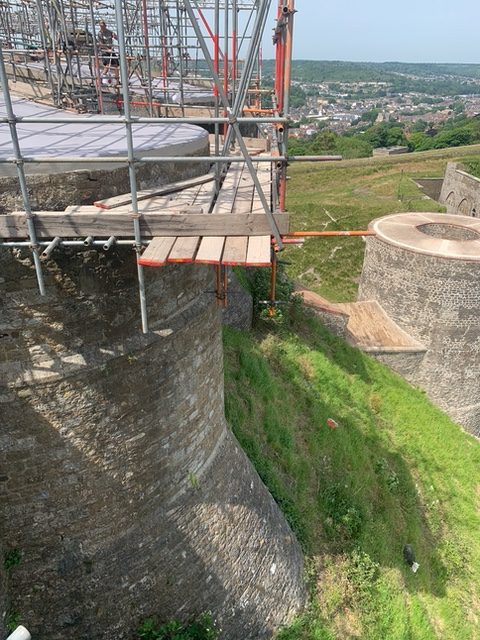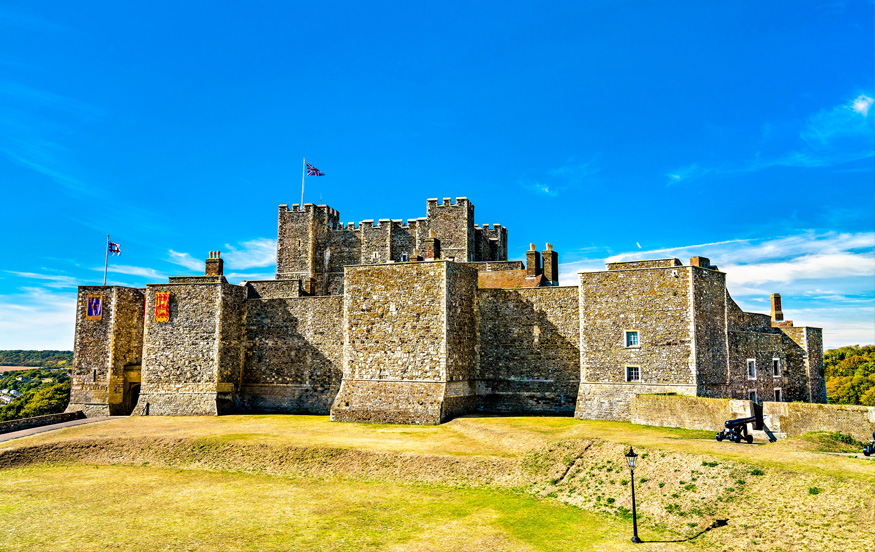Authentic materials for the conservation of heritage buildings and structures must not only retain the character, but also prove long-lasting and highly effective.
For many years mastic asphalt has been relied upon for roof refurbishment works on heritage projects. Mastic asphalt is frequently specified by the National Trust and English Heritage, as well as other public and private owners of prestigious buildings in this sector.
Buckingham Palace is testament to the longevity of mastic asphalt. On top of the Royal household is a rooftop of mastic asphalt that has kept the building dry for well over 80 years. Other heritage applications include the Tower of London, Tower Bridge, Westminster Cathedral and Edinburgh Castle.
Mastic asphalt is one of the few construction activities still regarded as a ‘craft trade’ and there are many time-served mastic asphalt roofing applicators working across the country. The skilled work involves ensuring that asphalt is at the correct temperature, and then spreading it using traditional techniques to coat the surface. A thermoplastic material that changes shape when heated, mastic asphalt cures to form a hard, durable, finished product to suit all applications of mastic asphalt.
As mastic asphalt is laid in molten form, it is often confused with other types of waterproofing membrane that require naked flame or torch on application. In reality, there is no naked flame at the point of installation and because mastic asphalt is so highly flame resistant, there is little or no potential of fire risk.
 A heritage project was recognised at the recent Mastic Asphalt Council (MAC) Awards 2023 hosted in London. The winner of Heritage Project of the Year was James Roofing Ltd for the project completed at Dover Castle. Rising above the famous White Cliffs high above the English Channel, the grade-I listed Dover Castle was built soon after 1066. The castle was at the centre of the crucial effort to evacuate hundreds of thousands of Allied troops from the beach of Dunkirk.
A heritage project was recognised at the recent Mastic Asphalt Council (MAC) Awards 2023 hosted in London. The winner of Heritage Project of the Year was James Roofing Ltd for the project completed at Dover Castle. Rising above the famous White Cliffs high above the English Channel, the grade-I listed Dover Castle was built soon after 1066. The castle was at the centre of the crucial effort to evacuate hundreds of thousands of Allied troops from the beach of Dunkirk.
Four towers in the castle had previously been protected with mastic asphalt and needed refurbishment. Shrinkage was evident around the edge detail of the existing rock asphalt, which was allowing vegetation to grow and water to penetrate and deteriorate the screed substrate.
James Roofing worked alongside IKO to devise a mastic asphalt solution which involved the formation of a large rebate around all the edge details to stop the movement from occurring. This solution satisfied the demands of English Heritage.
Highly Commended for Heritage Project of the Year at the MAC Awards 2023 was Abbey Asphalt Roofing Ltd for the project completed at Osborne House. An English Heritage property, Osborne House was Queen Victoria’s family home and is one of the most popular tourist attractions on the Isle of Wight. This was a challenging project in terms of getting mastic asphalt materials over to the island, and avoidance of noise, as the attraction was still open to the public during renovations. There were strictly no flame works allowed due to the high value of the property and its contents.
Clients in the heritage sector, such as roofing contractors, architects, surveyors and other specifiers, can benefit from MAC’s comprehensive technical information service, which provides advice on the design of all types of mastic asphalt installation. As part of this service, MAC has produced a series of Technical Guides which can be readily downloaded from the MAC website – click here to take a look.
Back in 2008, the Mastic Asphalt Council made history as the first industry in the world to achieve the CarbonZero standard. Since then mastic asphalt has offset thousands of tonnes of carbon dioxide – underlining its status as a green waterproofing material.
Although mastic asphalt is typically known for its durability, it is increasingly being specified for heritage roofing projects where green credentials are taken into consideration. When mastic asphalt has reached the end of its useful life, it can be recycled or used as roof screed. The Building Research Establishment (BRE) has officially stated that asphalt roofing is capable of lasting 50-60 years, but MAC has many examples well in excess of this. For instance, mastic asphalt was first laid at London’s St Paul’s Cathedral in 1906 and it provided well over 100 years’ of effective waterproofing before it needed replacement.
This article featured within the October 2023 edition of RCi magazine – click here to view the article.

